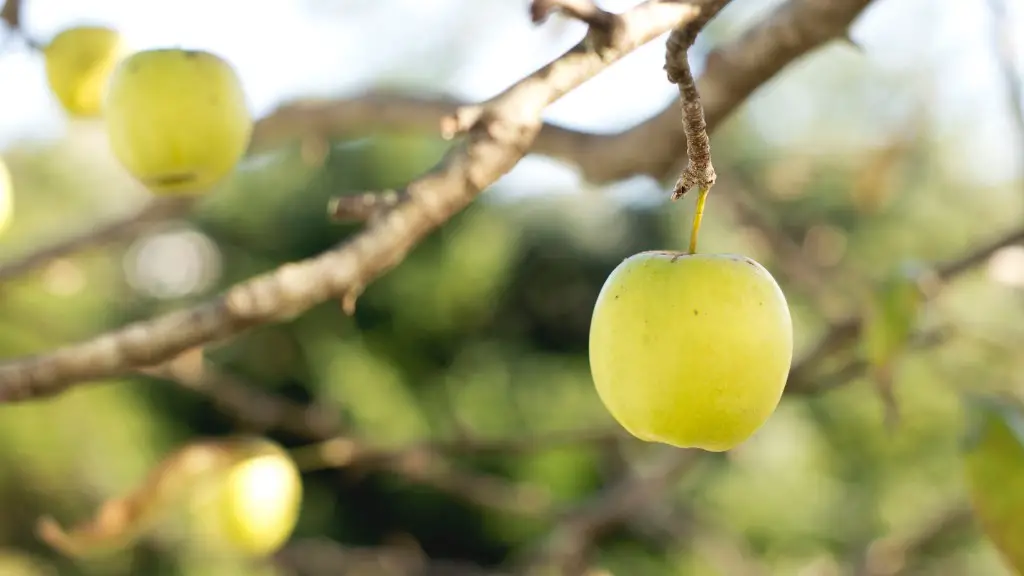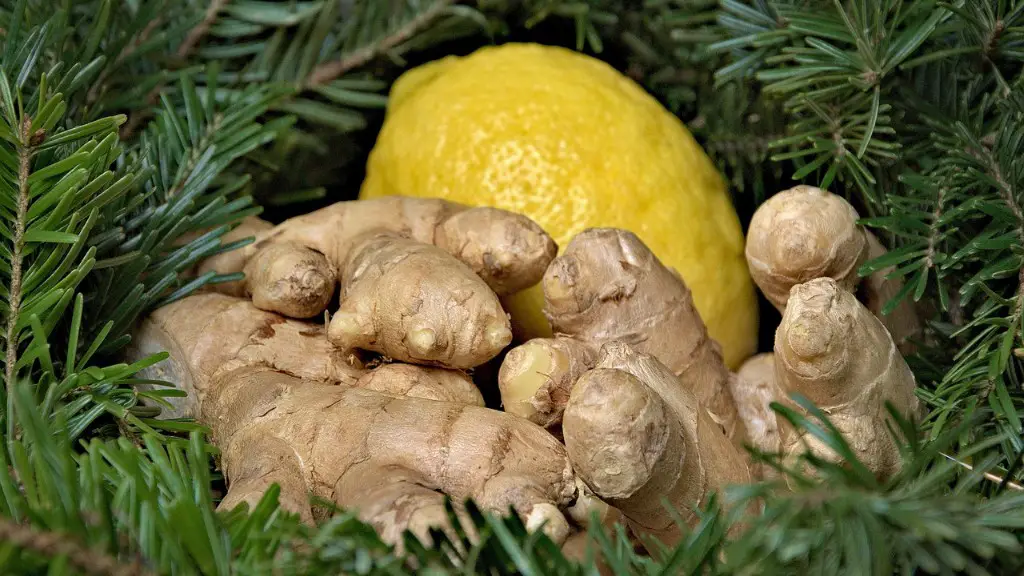First, select an apple tree variety which is suitable for the climate and soil conditions in your area. Generally, temperate climate apple varieties such as Red Delicious, MacIntosh, Yellow Delicious, and Granny Smith are suitable for planting in garden areas, however, consult with a horticulturalist or local nursery to decide which variety is best suited for your location.
Once you have identified the right variety, select a position in your garden that gets full sun and receives protection from cold winds. Position the apple tree so that the rootstock or graft level is at the same height or slightly higher than the soil level. Soak the roots in a bucket of water while you dig the planting hole. The size and depth of the hole should be twice the width of the roots and slightly deeper than the tree is in the pot.
After the hole is dug, mix into the bottom of the hole a handful of fertiliser and some soil conditioner. Gently place the tree in the hole and fill in the soil, gently firming the soil as you go so that no air pockets remain. Water the tree thoroughly to settle the soil.
Mulch is beneficial for apple trees and will help to increase the moisture and fertility soils, so spread a layer mulch onto the soil around the tree. Make sure the mulch doesn’t touch the base of the trunk however, as this can create disease problems. Finally, prune the branches of the tree to create an attractive shape and provide ventilation and air flow.
Caring For Apple Trees
Apple trees require regular orchard care to produce the best quality fruits. Trees should be checked regularly for pests and diseases so that they can be treated appropriately. Pruning should be done in the winter months when the tree is dormant to control the shape and size of the tree and promote flower production.
Fertilise the tree every 6-8 weeks during spring and summer with a specialised fruit tree fertiliser, this will help to promote healthier and stronger growth as well as more flowers and fruits. If the soil surrounding the tree is bare and dry then it should be watered regularly. Mulch can also help to reduce the need for frequent watering.
Apple trees do best when they are in the company of other friendly apples trees. Cross-pollination is necessary for most apple tree varieties to produce a good crop, so if you cannot fit more than one tree in the space you have, consider planting another variety of apple nearby.
Harvesting Apple Fruit
Apple fruit is ready for harvesting at different times for each variety. The key to knowing when to pick the apple fruits is to watch the colour of the apples. If it has changed from its original green to the variety’s red or yellow, then it is likely ready to pick. However, gently lifting the apple from the tree and gently twisting it will help to confirm if it is ready.
If the apple does not come off the branch easily when twisted, then it is not ready yet and should be left for another week for it to ripen further. Pick the apple fruits regularly to prevent overcrowding and late overcrowding, which can encourage pests and diseases.
Once picked, it is important to handle the apples with care to prevent bruising or damage to the skin. Store the fruit in a cool, dark place such as an old fridge or an airtight container, as apples which have been exposed to too much light will partially ripen and can cause the apples to go mouldy.
Preventing Disease In Apple Fruit Trees
Apple fruit trees are vulnerable to a variety of bacterial, fungal and virus diseases which can cause damage and reduce yields. Prevention is better than cure when it comes to disease control, and is best achieved by ensuring the tree is in a healthy and growing condition.
Foliage, branches and main trunk should be inspected regularly for any signs of disease such as leaf spots, bark lesions, cankers and stunted growth. Keeping the trees pruned to create good air flow between the branches and throughout the tree, and removing foliage that is dead, diseased or damaged will help to reduce the spread of disease by removing possible disease transfer routes.
Good hygiene is essential in managing apple diseases. Disinfect garden tools and materials regularly to prevent the spread of pathogens’. As certain diseases such as apple scab are soil borne, it is best to avoid planting apple trees in soils that have previously been infected.
Encouraging Apple Fruit Tree Growth
Encouraging growth in apple fruit trees can be done by providing extra nutrients and soil conditioners, as well as providing protection from cold winds and hail damage. Organic fertilisers such as fish emulsion, and horse, cow or poultry manure can be used to increase the nutrient and micronutrient levels in the soil surrounding the tree.
To protect from cold winds and hail, erect a bamboo or timber frame around the tree, or wrap it in burlap or frost cloth fabric during the winter months. A trellis can also be used to train and support branches to grow upright and in one direction, allowing for increased sunlight penetration and allowing the tree to produce a larger crop.
Regularly weeding and removing competing vegetation in the ground around the tree will reduce competing for nutrients as well as allowing greater access to sunlight, definitely aiding in ideal tree growth. Planting companion plants such as rosemary and nasturtiums around the base of the tree can also help to discourage pests which would otherwise damage the tree, and increase yields and fruit quality.
Pruning Apple Fruit Trees
A regular pruning program is essential for healthy apple fruit tree growth and development, as well as for controlling the shape and size of the tree. Once the tree has established and is growing, annual pruning should become part of your apple tree care routine. Pruning should be done during the winter months when the tree is in its dormant state, although younger trees can be pruned during the summer months.
Pruning is best done after the tree has fruited as dormant buds on older branches need pruning to encourage the growth of young fruiting branches. Make sure to remove dead, damaged and diseased branches, as well as any crossing and overcrowded branches, aiding in better air circulation and light penetration which will improve yields and quality.
Use sharp pruning shears and disinfect these before and after each cut to reduce spread of any infection or disease. Make sure to prune only a small section of the tree in one season, as over-pruning can stimulate weak growth, fewer flowers and reduced fruit size. Try to maintain the shape and structure of the tree with each pruning session.
Bagging Apple Fruits
Bagging apple fruits is an important step in preventing infestation from pests and other diseases which can damage the fruits. It should be done using properly ventilated paper bags which are easily secured to the fruit so that the bags form a protective covering over the apple fruit.
The best time to bag the apple fruits is just after fruit set, this will help to avoid disfigurement from birds and other pests, as well as avoiding sunburn and skin cracking. Take special care to wrap fragile skinned varieties as these can be prone to losses.
Bagging can be done by securing the bag around the stem, ensuring that it is snug against the apple trunk so large gaps are avoided, making access to the apples more difficult. Bags should be removed periodically to allow bees to pollinate the flowers, otherwise this process will be hindered, which can have a negative impact on the fruit yields.

